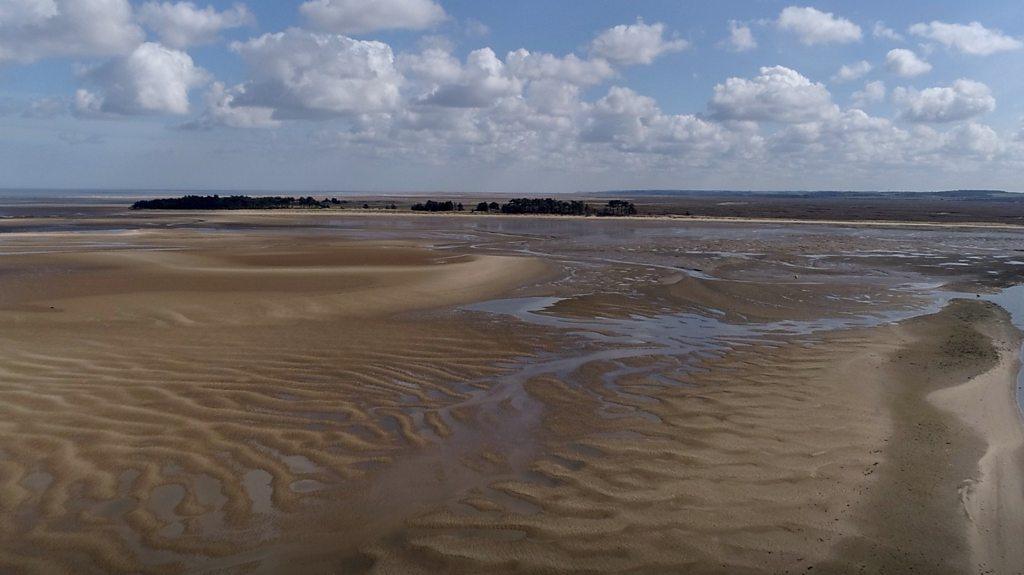Photos show impact of time on Norfolk beach wreck
- Published
The Sheraton was wrecked on Hunstanton beach in 1947
A skeleton jutting from the sand is all that remains of a trawler which played a part in two world wars.
Photographs have revealed the extent of the damage to the Sheraton, which has become a landmark since being wrecked just over 70 years ago.
The boat was launched in 1907 and found its final resting place on Hunstanton beach in Norfolk 40 years later.
Local photographer Gary Pearson has captured the scale of change caused by time and tides, as well as salvagers.
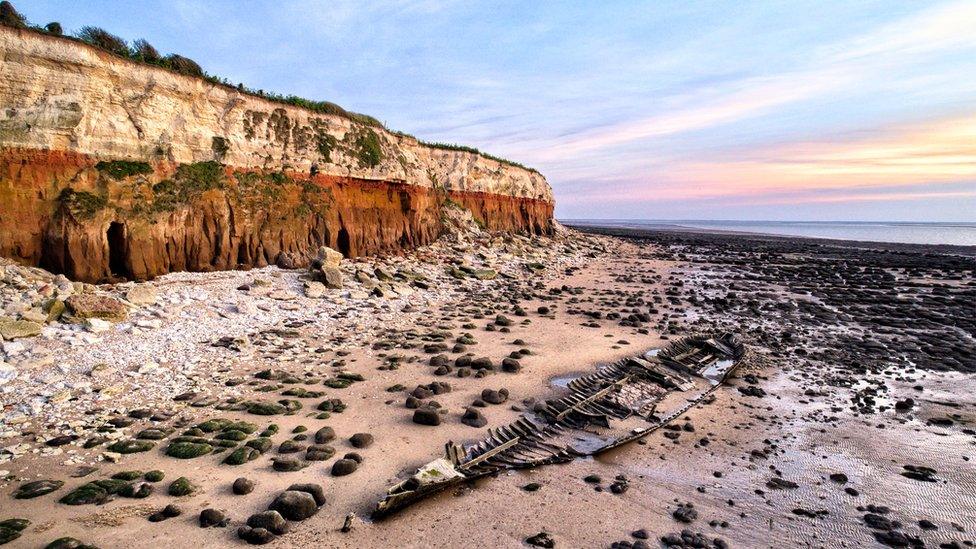
The remains of the Sheraton can be seen at low tide on Hunstanton beach

The Sheraton washed up on Hunstanton beach in 1947
Mr Pearson, from nearby Dersingham, said: "It has been there a long time and I, along with many others, have wondered what it looked like when it was originally washed up.
"It is nice to be able to make a comparison with what was there in 1947 when it was wrecked."
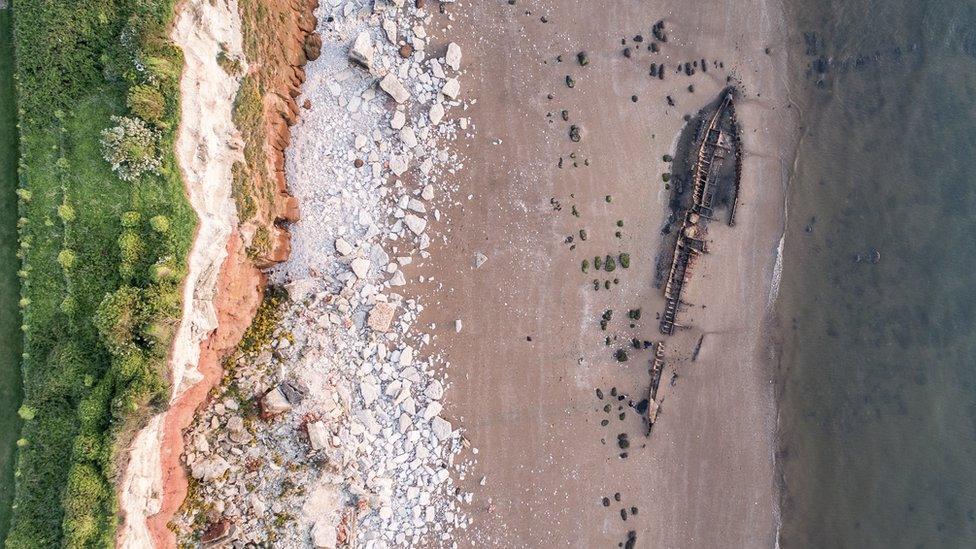
Parts of the Sheraton were salvaged following it being wrecked
He added there may not be much time left to see the wreck as parts of it were constantly wearing away and can be found scattered on the beach by the tide.
According to Norfolk County Council's records, the Sheraton was used as boom defence vessel between 1915 and 1918 and had a gun turret attached during World War Two when it acted as a patrol boat.

The gun turret can still be seen in this photograph from 1947
It was then used for target practice before breaking its moorings one night and being wrecked beneath Hunstanton cliffs.
- Published10 September 2017
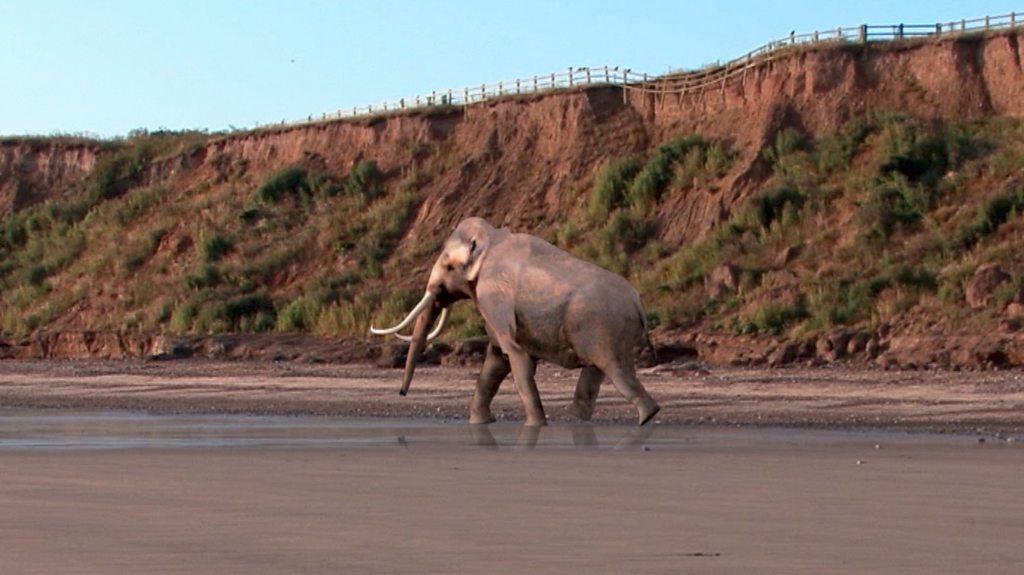
- Published2 August 2015
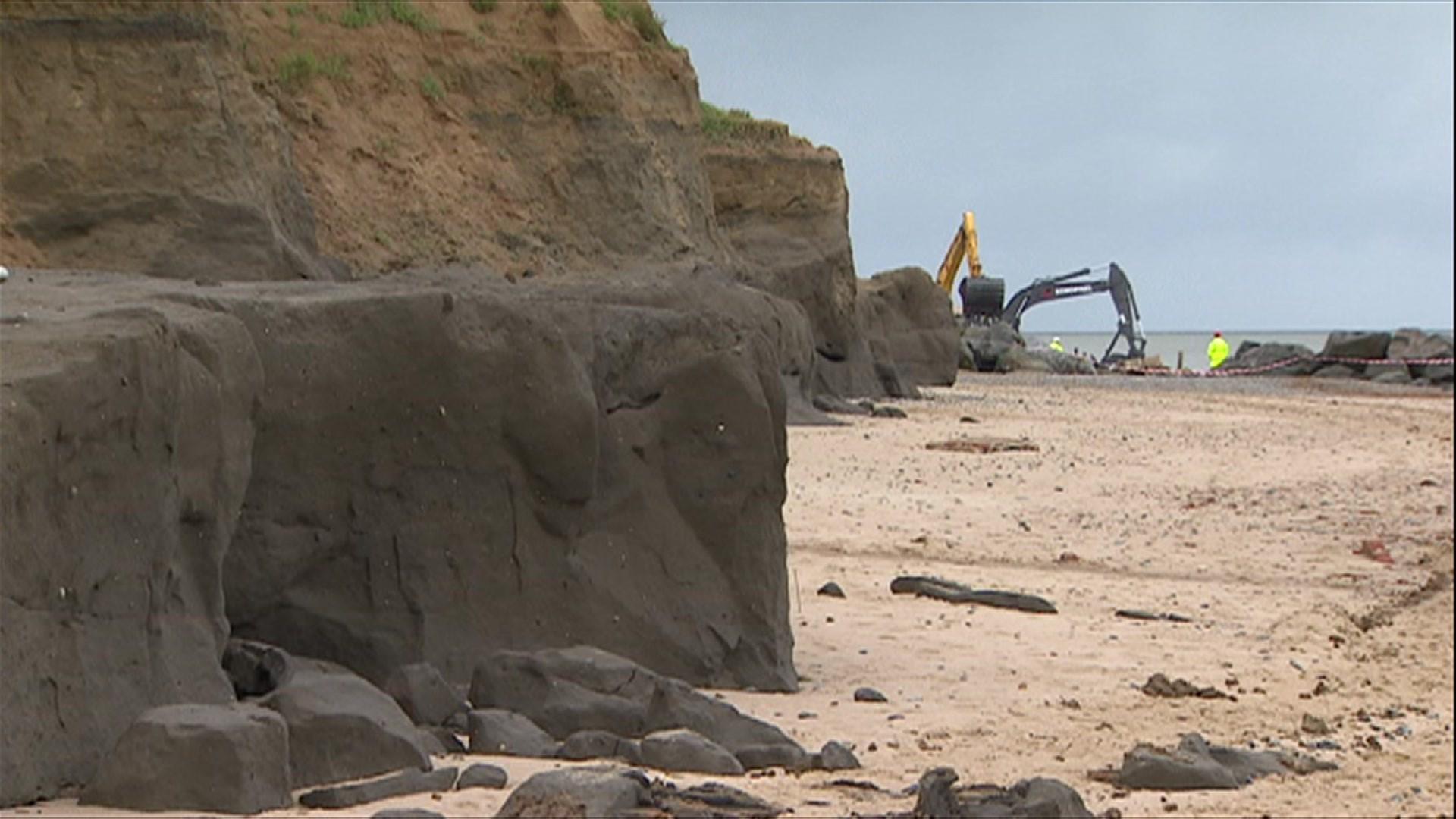
- Published8 April 2018
